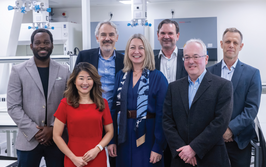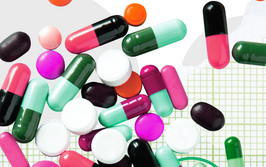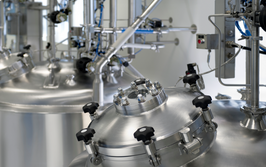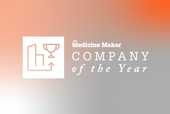The Underworld of Counterfeit Fentanyl
A deep dive into the dangers of fentanyl entering the US supply chain – and the importance of the Drug Supply Chain Security Act
Jamie Irvine | | 6 min read | Interview

As the saying goes, “one pill can kill.” And the official website for the US Drug Enforcement Agency (DEA) suggests: “Never trust your own eyes to determine if a pill is legitimate.”
Counterfeit medicines remain a significant issue, even in well-established and robust supply chains. In the US right now, there are particular issues with fentanyl, which is increasingly being found in counterfeit medicines. The DEA has issued a public safety alert, warning of “a sharp nationwide increase in the lethality of fentanyl-laced fake prescription pills.
Here, we discuss counterfeit medicines and fentanyl with Dan Kraciun, Trust.med’s Vice President of Operations and Chief Marketing Officer.
Why are you so passionate about stopping counterfeit medicines?
I’ve always been fascinated with communication and the internet. Throughout my career, I’ve had the opportunity to build software companies and work alongside people that have had the highest levels of access relating to the organization of information on the internet – otherwise known as top level domains. With the skills I acquired, my intention was to find a meaningful endeavor, where technology and communication could be harnessed to aid people. At Trust.med, we asked ourselves: “What substantial problem can we be part of the solution for?” This then led us to counterfeit medications and the Drug Supply Chain Securities Act (DSCSA). We felt we could provide an important service.
How do counterfeit medicines enter legitimate supply chains?
It is a highly complex problem. Until the inception of the DSCSA, there was no electronic lifecycle tracking. From the start of a product, to commissioning, and delivery to the pharmacy, there was a lack of visualization. Consider this example; a truck containing pharmaceutical products falls over on the highway and someone picks up a couple of boxes containing prescription medications. That person can now go to a pharmacy operating on low margins with legitimate looking packaging and introduce their alterations into the supply chain. Funnily enough, this happens more than you’d think.
But these operations can be far more sophisticated; last year, Gilead faced numerous issues with a counterfeit HIV drug ring. In fact, law enforcement executed seizures at 17 locations in eight states, where thousands of bottles of Gilead-labeled medications were found. In a statement, Gilead said, “[Our] ongoing investigation revealed that these two kingpins directed the initial sale of the counterfeits through suppliers created solely to sell counterfeit medications.” Suppliers delivered the product to pre-existing licensed gray-market distributors with an established pharmacy customer base. And since 95 percent of all online pharmacies are estimated to be operating unlawfully, it is very plausible that counterfeit drugs can easily get in the hands of patients.
The DSCSA will make it more difficult for counterfeit pharmaceuticals to enter supply chains. By gaining comprehensive insight into a product’s entire lifecycle and implementing specific regulations governing interactions at various stages of that lifecycle, supply chains can be better secured. One of the mandates introduced by the legislation will give pharmacies the authority to verify a product’s authenticity. Another mandate involves serializing drug products, with a distinct number linked to the precise dosage, packaging, lot number, and expiration date.
How bad is the problem of counterfeit medicines in the US?
Let’s start from a local perspective: only recently, in my own community, there was a case where counterfeit oxycodone was laced with fentanyl. It was shipped from Arizona to Ohio through the postal service and discovered about five blocks from my home. I live in a small, family-oriented community where you would not expect this to happen. Law enforcement seized around one kilogram of the stuff, and another half-kilogram when they searched the suspect’s house. What you have to consider is that this is happening across small communities throughout the US.
According to CDC statistics, approximately one percent of all pharmaceuticals distributed through American pharmacies are counterfeit. However, this statistic pertains solely to the legitimate supply chain. In the example above, it is not known whether the product was going into the supply chain or elsewhere, but the fact is that this is a serious problem impacting everybody in the US, whether they are aware of it or not.
Counterfeit products have been a problem for a long time. But the introduction and use of fentanyl is new, and the people counterfeiting these drugs are business-minded. Fentanyl is cheap to manufacture and highly potent. It can mimic the effects of painkillers and is also addictive, which can keep customers coming back. However, fentanyl is difficult to manufacture correctly in the correct purity. About two milligrams is considered to be a lethal dose, and counterfeit prescription products that are confiscated are found to have about five milligrams on average. Studies have shown that fentanyl is one of the leading causes of death in adults between the ages of 18 and 45 in the US.
Prior to the DSCSA, the federal government did provide some guidance, but they were most definitely letting companies operate in a way that allowed these things to occur. The new legislation, in this sense, is a hammer. It acknowledges the requirement for change while also upgrading the technology needed to address the issue.
What else would you like to see the pharma industry doing to help prevent counterfeit medicines from reaching patients?
There is bureaucracy in any industry, which, to me, is the result of a lack of engagement with one another. “How should we communicate with one another? Are we focused on building good applications that deliver on our promises? Are we ensuring that people are safe and healthy?” These are the questions we must be asking.
I would like to see communication become more application based and less theoretical by design. Right now, a number of renowned companies are calling for the DSCSA enforcement to be put on hold. I view this as the wrong decision that avoids the solutions that would make this transition possible. The DSCSA was established in 2013 – so this represents over a decade’s work. Consider this, we’ve created rockets that land themselves on planets in less than a decade, so I’m sure companies can make the necessary adjustments in alignment with the act…
Why is the DSCSA so important for the future?
This act will allow us to track the lifecycle of a product as it changes ownership between parties. The important phrase here is “change of ownership,” because this is where there are opportunities for potential nefarious activity. The DSCSA will also establish a certain standard of technology, allowing interoperability between all the technology companies and setting us up for future success as technology continues to evolve.
Right now, the DSCSA is specifically meant for manufacturers, distributors, pharmacies, dispensers, and hospital systems. I also foresee this legislation enabling companies – like ours – to pass information to the consumer, letting them ask questions about their products to ensure safety not just when they're being dispensed, but also prior to them consuming the medication.
- DEA, “DEA Laboratory Testing Reveals that 6 out of 10 Fentanyl-Laced Fake Prescription Pills Now Contain a Potentially Lethal Dose of Fentanyl,” (2023). Available here
Associate Editor, The Medicine Maker



















